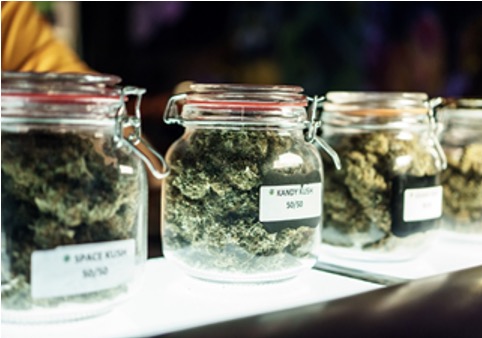
As cannabis culture grows in visibility, more people are becoming curious about the marijuana experience — and as more people investigate marijuana, more people are confronted with the concept of strains. Ostensibly, different strains offer weed users different combinations of cannabinoids and terpenes, to provide completely different highs. A pure indica strain like Northern Lights, for instance, will cause users to calm down and relax, whereas a sativa-skewing strain like Jack Herer will give users energy and cause more intense visual and psychological effects. Strains are so prevalent and so useful that entire websites (like this one, https:/weedmaps.com/strains) are devoted to expounding their delicate differences
From the outside, marijuana strains are not difficult to grasp; just as there are different varieties of wine grape that produce wines with different flavors, it makes sense that there would be different varieties of the cannabis plant that produce bud with differing properties. However, that widely held supposition just isn’t backed up by science.
What Science Says About Strains
Admittedly, there isn’t much reliable research on cannabis. For almost all of the 20th century, prohibitive laws against cannabis cultivation made studying the plant and its effects almost impossible. Even if their research petitions were passed and grants awarded, researchers were compelled to obtain their cannabis samples from one of few government-owned cultivation centers, which grew outdated varieties of cannabis that often lacked the cannabinoid and terpene profile of what users accessed on the street.
Still, science does have something to say about strains — namely, that they don’t exist in the way most users understand them. Here are the essential truths:
All strains are more or less genetically the same
Weed breeders and even budtenders like to talk about strain “genetics.” For example, the strain Obama Kush is a blend of the “genetics” from the strains Afghani and OG Kush. However, when looking at the genes of different strains, researchers found essentially no meaningful difference.
Terpene profiles might differ, causing slight changes in effects
An indica can have a high THC content, and many sativas have plentiful CBD, so cannabinoids are not a defining factor in differentiating strains. Instead, the differences in effects between strains might be entirely the result of terpene profiles. Terpenes are compounds found in many plants, and they are often held responsible for the aromas and flavors of substances like wine. Early research indicates that terpenes can have physical effects on the body, just as cannabinoids do, so the different terpenes within different strains might be shifting the experience of highs in different directions ever so slightly.
Primarily, personal reaction to marijuana informs the high
Much, much more important than cannabinoid content and terpene profile is a user’s own physiology. Some people are much more tolerant of cannabinoids and terpenes than other people, so their highs will be much more subdued and often they will require higher doses to reach the positive psychoactive effects they desire. In contrast, some users are remarkably sensitive to cannabinoids, and even small amounts result in an unpleasant overdose. No two people experience marijuana the exact same way, and understanding one’s personal reactions is key to having a good high.
What the Future of Strains Looks Like

Though almost everyone within the cannabis community uses strains to distinguish between different types of buds, in truth only growers truly benefit from the strain system. Though indicas and sativas have no reliable differences in use, they are more recognizably classified in their growth patterns: indicas grow short and shrubby while sativas are tall and lean; indicas have briefer growth periods and sativas take longer to flower. Still, there is a reason that grocery stores don’t use the same language as farmers in the goods they sell — consumers don’t need to know about growth cycles and the like to make informed choices about their bud. Thus, a new naming convention is more than warranted.
Based on the science, there are two viable replacements:
Terpene profile
Mapping the dominant terpenes within a strain is already a common practice, so replacing strain names with those profiles will be an easy transition. Unfortunately, researchers aren’t totally sure of the range of effects of all terpenes present in marijuana, so knowing the terpene profile isn’t synonymous with understanding the correlated high just yet.
Cannabinoid content
Perhaps more comprehensible to most cannabis consumers is a breakdown of the cannabinoid content of different strains. Higher THC strains will be much more psychoactive, while higher CBD strains will be a bit more mellow. Still, other cannabinoids and terpenes can have meaningful impacts on the experienced high, so cannabinoid categories might not be enough for users with particular tastes.
Science doesn’t have all the answers concerning cannabis — at least not yet. But for now, we should take what science does understand and act on it for the betterment of cannabis culture. If that means replacing strains with a more comprehensive categorization system, then so be it.
Interesting Related Article: “20 Medical Benefits of Marijuana You Probably Never Knew“

